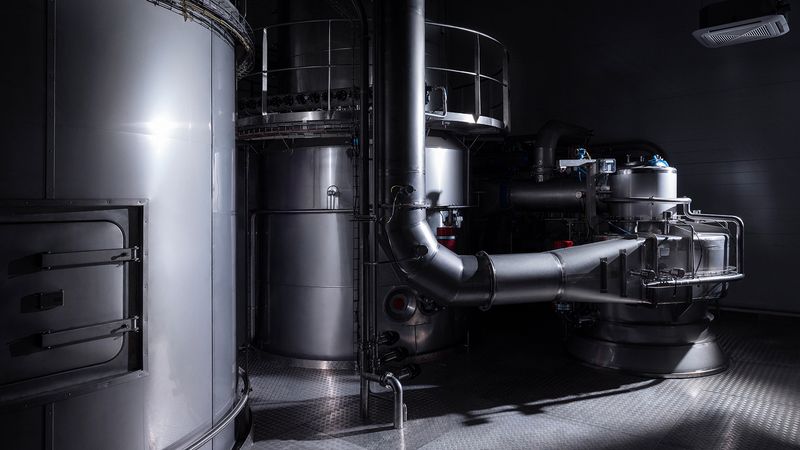

The art of minimizing downtime to help combat manufacturing costs
For manufacturers, keeping a close eye on their Overall Equipment Effectiveness (OEE) numbers, the last thing they want is unscheduled downtime messing things up. Kati Hope, Global Account Manager of Mettler-Toledo Product Inspection shares information on how picking the right product inspection system can be a game-changer for keeping the production line humming and decreasing spend for food manufacturers
Downtime – the arch-nemesis of OEE. Those brag-worthy running speeds of production line equipment don't mean a thing when the whole operation grinds to a halt for hours to deal with glitches.
So, how do you reduce production line downtime? Two words: modern technology. Invest in cutting-edge machinery designed to keep your production line running smoothly. Also, show some love to the machines you already have. Keeping them well-maintained is like giving them a spa day, so that they keep churning out the goods without interruptions.
Sure, splurging on new machinery means capital expenditure, but the return is quick. Machines start failing more often as they age, especially past the 15-year mark. Holding onto outdated, cranky equipment is like inviting trouble – it drags down your production line and messes with your business mojo.
But hey, it's not all gloom and doom. The world of product inspection technology has seen some serious advances. Introducing new systems into your production set-up not only boosts efficiency but also kicks food safety up a notch.
Modern product inspection gear isn't just about looking snazzy; it's a productivity powerhouse. For example, you can initiate new job changeovers with a simple press of a button. Job parameters can be pre-programmed and recalled instantly, and then the machine can set itself up through a series of automated procedures. Operators no longer need to carry out manual set-up tasks, freeing them to focus on other parts of the production line. Quicker and automated job changeover means the next production run can start sooner, and there is less potential for human error that can also delay lines getting back up to speed. Many metal detection systems today feature a product clustering capability that contributes to increased uptime by simplifying set-up.

Optimising cleaning time
Cleaning is another area where modern product inspection systems can help reduce downtime. The intelligent design of the system, which makes it easier to disassemble, clean and reassemble, often utilises the lean manufacturing concept of poke-yoke, which translates as “mistake-proofing”. Systems designed with poke-yoke in mind have parts that are not only quick and easy to take apart and put back together, but can only be reassembled in the correct way, avoiding errors.
Manufacturers should invest in preventive maintenance support and remote diagnostics with their supplier to identify and fix potential problems before they develop into actual problems
Hygienic design concepts also enable quicker cleaning times. An example of this in practice is the Mettler-Toledo CM Washdown Combination checkweigher and metal detection system, which has been specially designed for hygienic operation and fast cleaning, making it ideal for factories with a need for frequent job changeovers with stringent washdown regimes. The design of the machine’s frame is based on sloped surfaces that help to minimise the risk of ingredients or contaminants gathering in corners, making cleaning easier and quicker. Easy disassembly and reassembly of parts is also built into the CM Washdown Combination system’s design.
Protection against the ingress of cleaning agents and liquids that can damage internal components such as electrical circuits is also critical in harsh washdown environments. An ingress protection rating of IP69, which is the highest possible, means that a system is protected against dust and close-range high pressure, and high temperature liquid spray downs. The CM Washdown Combination system mentioned above offers this IP69 rating.
Preparing for every eventuality
So far, we have looked at how the characteristics of a new product inspection machine can help reduce downtime through more efficient set-up and operation and quicker, simpler cleaning. But once the machine is installed, adopting a strong commitment to service and maintenance will extend its working life and so that it does not cause production line stoppages – which will ultimately result in that happy ending every manufacturer covets.
It almost goes without saying that unexpected system breakdowns are costly events that should be avoided. Operating up-to-date machinery certainly is a first step to doing so but going forward, manufacturers should invest in preventive maintenance support and remote diagnostics with their supplier to identify and fix potential problems before they develop into actual problems. Some machinery suppliers can deploy Augmented Reality as an advanced tool to help in this process.
Plan ahead, schedule maintenance when the line's taking a breather and keep a stash of spare parts on-site for quick fixes. Some manufacturers skip these basic steps, and bam, system breakdowns hit them like a ton of bricks.
Don’t let that happen to you! Downtime, the ultimate villain, can strike, but being smart about it means reducing the odds. Less disruption and fewer chances of costly failures – it's a win-win.
To learn more about combating manufacturing costs, click here
If you have any questions or would like to get in touch with us, please email info@futureofproteinproduction.com






